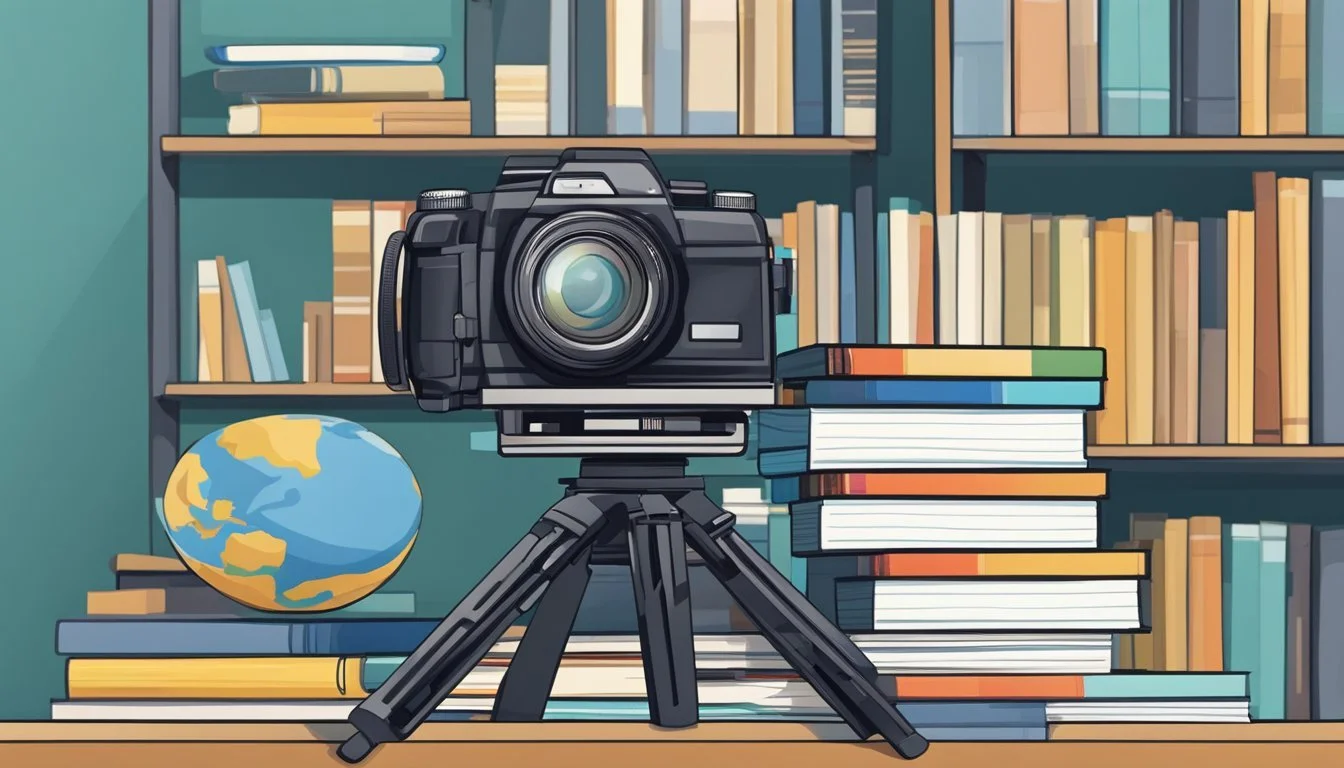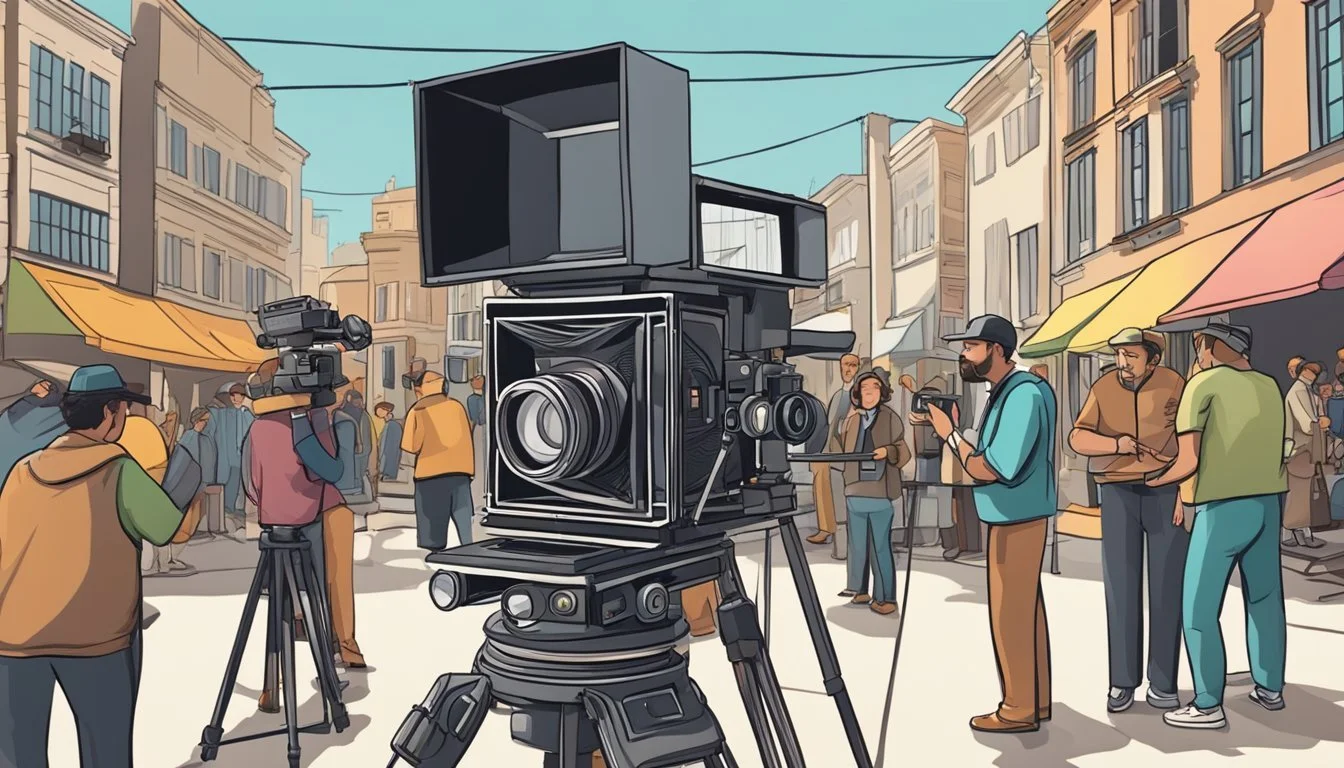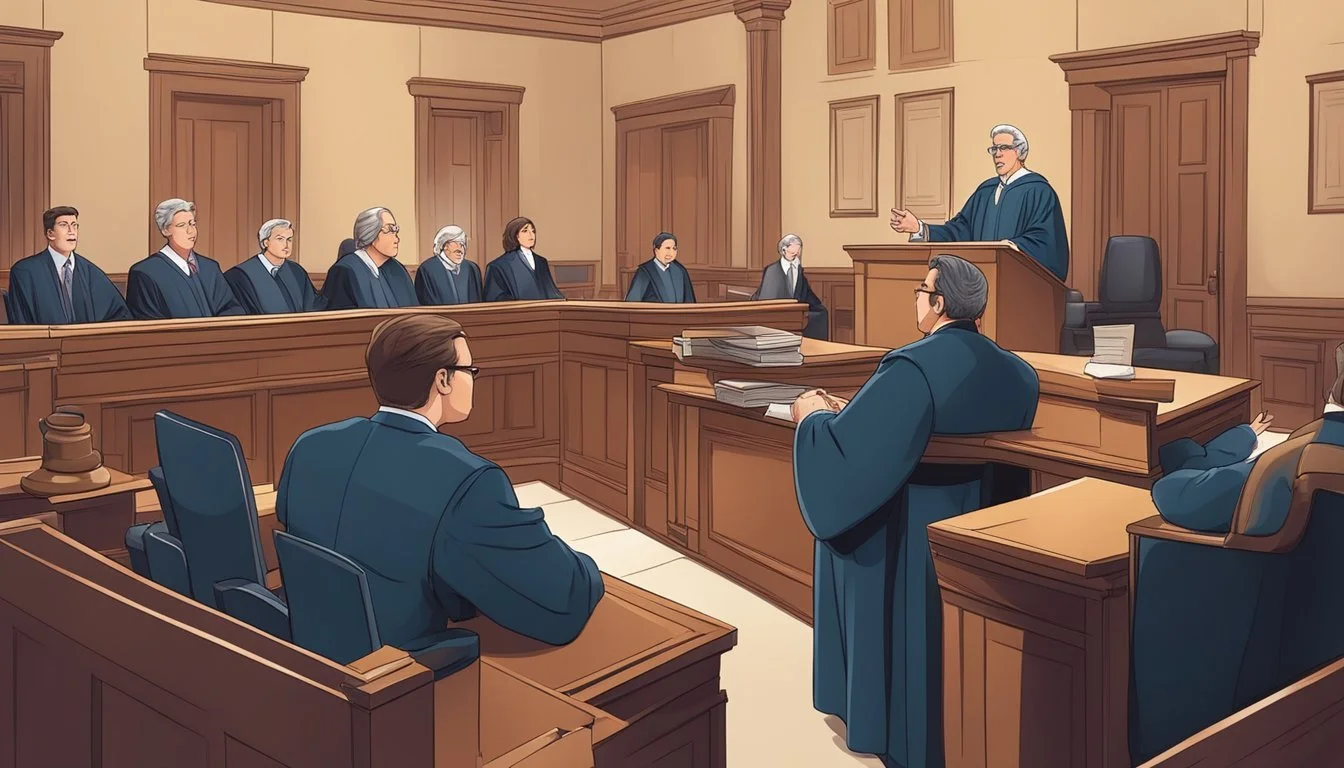Mind-Blowing Truths Exposed: 10 Docs That Will Change Your Life Forever!
Documentaries offer a window into real-world stories, providing insight, inspiration, and education. From historical events to celebrity profiles, these films cover a vast array of subjects. Netflix, Hulu, and other streaming platforms have extensive libraries of high-quality documentaries available for viewers to explore.
The best documentaries captivate audiences with compelling narratives and thought-provoking content. They can be provocative, funny, sad, or inspiring, often eliciting strong emotional responses from viewers. Many tackle important social issues, while others focus on more lighthearted topics or personal stories.
Feature-length documentaries and documentary series allow filmmakers to delve deep into their chosen subjects. Whether examining complex historical events or following the lives of fascinating individuals, these films offer viewers a chance to broaden their horizons and gain new perspectives on the world around them.
The Evolution of Documentary Films
Documentary films have undergone significant transformations since their inception. Technological advancements, societal changes, and shifting audience preferences have shaped their development over time.
Early Beginnings and Historic Milestones
The roots of documentary filmmaking trace back to the late 19th century. Early pioneers like the Lumière brothers captured snippets of everyday life, laying the groundwork for nonfiction cinema.
The 1920s saw the emergence of groundbreaking works like Robert Flaherty's "Nanook of the North" (1922), which blended authentic footage with staged scenes. This period also witnessed the rise of Soviet filmmakers like Dziga Vertov, who experimented with montage techniques.
John Grierson coined the term "documentary" in the 1930s, defining it as the "creative treatment of actuality". His work with the British Film Unit set standards for social documentary filmmaking.
Rise of Feature-Length Documentaries
The 1960s marked a turning point with the advent of lightweight cameras and synchronized sound recording. This technological shift enabled filmmakers to capture reality more intimately.
Landmark films like "Don't Look Back" (1967) by D.A. Pennebaker showcased the potential of observational cinema. Frederick Wiseman's "Titicut Follies" (1967) pushed boundaries in exposing social issues.
The 1980s and 1990s saw documentaries gaining wider theatrical releases. Michael Moore's "Roger & Me" (1989) demonstrated the commercial viability of feature-length documentaries, paving the way for future successes.
Impact of Streaming Services
The digital age has revolutionized documentary distribution and consumption. Streaming platforms like Netflix, Amazon Prime, and Google's YouTube have made documentaries more accessible than ever.
These services have invested heavily in original documentary content. Netflix's "Making a Murderer" (2015) and "Tiger King" (2020) became global phenomena, sparking widespread discussions on social media platforms like Facebook.
Streaming has also enabled niche documentaries to find their audiences, leading to a diverse range of topics being explored. The format has evolved, with multi-part series becoming increasingly popular.
This democratization of content has led to both opportunities and challenges for filmmakers, as they navigate new funding models and audience engagement strategies in the digital landscape.
Genres and Categories
Documentaries span a wide range of subjects and styles, offering viewers diverse perspectives on real-world topics. From wildlife adventures to musical performances, these films provide insight into various aspects of our world and culture.
Nature and Wildlife
Nature documentaries transport viewers to remote locations, showcasing Earth's diverse ecosystems and animal behavior. These films often feature stunning cinematography and time-lapse photography to capture rarely seen events.
Popular series like "Planet Earth" and "Blue Planet" set new standards for wildlife filmmaking. They utilize cutting-edge technology to reveal previously undocumented animal behaviors and habitats.
Many nature documentaries also address environmental concerns. Films like "Chasing Coral" and "Before the Flood" highlight the impacts of climate change on fragile ecosystems.
True Crime
True crime documentaries delve into real-life criminal cases, often exploring unsolved mysteries or controversial convictions. These films combine interviews, archival footage, and reenactments to present compelling narratives.
Series like "Making a Murderer" and "The Jinx" have gained massive popularity, sparking public debates about the justice system. They often focus on the investigative process and potential miscarriages of justice.
Some true crime documentaries, such as "The Act of Killing," take unconventional approaches to explore complex topics related to crime and its aftermath.
Music and Performance
Music documentaries offer behind-the-scenes glimpses into the lives and careers of musicians. They often feature concert footage, interviews, and archival material to tell artists' stories.
Films like "Woodstock" and "Gimme Shelter" capture iconic moments in music history. More recent documentaries like "Amy" and "Miss Americana" provide intimate portraits of contemporary artists.
These films explore the creative process, the music industry's challenges, and the cultural impact of various genres and performers.
Comedy and Satire
Comedy documentaries often blend humor with social commentary. They may focus on stand-up comedians, satirical news programs, or comedic events.
Films like "The Aristocrats" and "Comedian" offer insights into the craft of comedy and the lives of performers. Others, such as "Religulous" and "Supersize Me," use humor to critique societal issues.
Some comedy documentaries, like "This Is Spinal Tap," blur the line between fact and fiction, creating the "mockumentary" subgenre.
Political and Civil Rights
Political documentaries examine government policies, social movements, and historical events. They often aim to inform viewers about complex issues and inspire action.
Films like "The Act of Killing" and "The Square" offer powerful looks at political upheaval and human rights abuses. Others, such as "13th" and "I Am Not Your Negro," explore the ongoing struggle for civil rights in America.
These documentaries frequently combine historical footage with contemporary interviews to provide context and perspective on current events.
Pop Culture and Society
Pop culture documentaries explore trends, subcultures, and social phenomena. They often reflect broader societal shifts and cultural attitudes.
Films like "Paris Is Burning" and "The Last Dance" delve into specific subcultures and their wider impact. Others, such as "The Social Dilemma" and "Blackfish," examine the effects of technology and entertainment on society.
These documentaries frequently use a mix of archival footage, interviews, and observational filming to capture the essence of their subjects.
Influential Documentary Films
Documentaries have the power to expose injustice, shed light on hidden truths, and spark social change. Two films that exemplify this impact are "13th" and "The Tinder Swindler."
13th by Ava DuVernay
Ava DuVernay's "13th" is a hard-hitting examination of the U.S. prison system and its disproportionate impact on African Americans. Released in 2016, the film draws a direct line from slavery to mass incarceration.
DuVernay uses archival footage and expert interviews to reveal how the 13th Amendment's loophole allows for involuntary servitude as punishment for crime. This documentary exposes racial biases in law enforcement and sentencing practices.
"13th" received critical acclaim and an Oscar nomination for Best Documentary Feature. Its compelling narrative has educated millions on systemic racism and fueled discussions about criminal justice reform.
The Tinder Swindler
"The Tinder Swindler" tells the shocking true story of conman Simon Leviev and his victims. This 2022 Netflix documentary follows women who were manipulated and defrauded through the dating app Tinder.
The film uses interviews, text messages, and voice recordings to piece together Leviev's elaborate scams. It highlights the dangers of online dating and the psychological tactics employed by con artists.
"The Tinder Swindler" became a global sensation, sparking conversations about romance fraud and digital safety. Its success demonstrates the public's appetite for true crime documentaries that expose modern-day deceptions.
Documentaries and Social Change
Documentaries have become powerful tools for raising awareness and inspiring action on important social issues. They shine a light on injustice, amplify marginalized voices, and motivate viewers to get involved in creating positive change.
Civil Rights and Social Justice
The civil rights movement has been powerfully portrayed through documentary films. "Eyes on the Prize" chronicles the African American struggle for equality from 1954-1965. It features archival footage and interviews with key figures, bringing history to life.
"13th" examines racial inequality in the U.S. criminal justice system. The film draws connections between slavery and mass incarceration of Black Americans. It sparked discussions on prison reform and systemic racism.
"The Social Dilemma" explores the negative impacts of social media on society. It features tech insiders discussing how platforms exploit human psychology. The film raised concerns about data privacy, misinformation, and tech addiction.
Environmental Advocacy
Environmental documentaries have galvanized public support for conservation efforts. "An Inconvenient Truth" brought climate change into the mainstream. It presented complex science in an accessible way, prompting viewers to reduce their carbon footprints.
"Blackfish" exposed the treatment of orcas in captivity at SeaWorld. The film led to public outcry, declining park attendance, and policy changes. SeaWorld eventually ended its orca breeding program and theatrical shows.
"Chasing Coral" uses stunning underwater footage to show the devastating effects of coral bleaching. It inspired increased funding for reef conservation and stricter regulations on ocean pollution.
The Role of Documentaries in Education
Documentaries serve as powerful educational tools, offering unique perspectives on complex subjects. They bring real-world issues into classrooms, sparking discussions and critical thinking.
These films provide visual and emotional engagement, making abstract concepts more tangible for students. Documentaries can cover a wide range of topics, from historical events to current social issues.
Teachers often use documentaries to supplement traditional learning materials. They can introduce new ideas, challenge existing beliefs, and encourage students to explore topics further.
Some key benefits of using documentaries in education include:
Enhancing visual literacy
Developing empathy and cultural awareness
Inspiring curiosity and independent research
Providing real-world context for academic subjects
Documentaries like "Waiting for 'Superman'" highlight challenges in education systems, prompting reflection and debate. Others explore scientific discoveries, historical events, or environmental issues.
When selecting documentaries for educational use, teachers consider:
Age-appropriateness
Relevance to curriculum
Accuracy of information
Potential for classroom discussion
By incorporating documentaries, educators can create more dynamic and engaging learning experiences. These films often leave lasting impressions, motivating students to become more informed and active citizens.
Production and Filmmaking Techniques
Documentary filmmaking requires a unique blend of creative vision and technical skill. Key techniques in cinematography, editing, and storytelling shape compelling narratives that inform and captivate audiences.
Cinematography and Direction
Documentary cinematography aims to capture authentic moments while maintaining visual appeal. Handheld cameras offer flexibility and a raw, immediate feel. Directors often employ observational techniques, allowing events to unfold naturally. Interviews may use static shots with carefully considered backgrounds.
Lighting presents challenges in uncontrolled environments. Filmmakers utilize natural light when possible, supplementing with portable LED panels. Wide shots establish context, while close-ups reveal emotions and details. Time-lapse and slow-motion footage add visual interest and emphasize key themes.
Directors balance planned shots with spontaneous capture. They must anticipate action, position cameras strategically, and remain adaptable. Building rapport with subjects is crucial for natural performances and access to intimate moments.
Editing and Post-Production
Editing shapes the narrative structure of documentaries. Filmmakers sift through hours of footage to identify key moments and themes. They construct a cohesive story arc, balancing information delivery with emotional impact.
Techniques like parallel editing connect disparate scenes thematically. Match cuts create visual continuity. Montages compress time and convey broader concepts. Pacing varies to maintain viewer engagement, with slower sections for reflection and faster cuts for energy.
Color grading enhances mood and visual consistency. Sound design layers ambient audio, music, and effects to enrich the viewing experience. Graphics and animations can clarify complex information or historical context.
Narration and Storytelling
Effective documentaries weave compelling narratives from real-world events and characters. Filmmakers may use voice-over narration to provide context and guide viewers through complex topics. Some opt for a purely observational approach, letting subjects and events speak for themselves.
Interview techniques vary, from formal sit-downs to casual conversations. Filmmakers craft questions to elicit candid responses and revealing moments. B-roll footage illustrates subjects' words and adds visual interest.
Story structure often follows classic dramatic arcs, with clear beginnings, middles, and ends. Conflict and resolution drive engagement. Juxtaposition of contrasting viewpoints creates tension and nuance. Personal stories humanize broader issues, connecting viewers emotionally to the subject matter.
Legal and Ethical Considerations
Documentary filmmakers face important legal and ethical obligations when creating their works. These considerations help ensure films are produced responsibly while respecting the rights of subjects and other creators.
Fair Use and Copyright
Documentary filmmakers must navigate copyright laws when using existing footage or music. Fair use allows limited use of copyrighted material without permission for purposes like commentary or criticism. Filmmakers should carefully evaluate if their usage qualifies as fair use.
Obtaining proper licenses and permissions is crucial for any copyrighted content not covered by fair use. This includes archival footage, photographs, and music. Filmmakers must keep detailed records of all rights clearances.
Some documentaries rely heavily on fair use to incorporate news clips or pop culture references. However, overuse can lead to legal challenges. Consulting an entertainment lawyer is advisable for complex fair use situations.
Representation and Consent
Obtaining informed consent from documentary subjects is an ethical imperative. Subjects should understand how they will be portrayed and the potential impact of participating. Filmmakers must be transparent about their intentions and methods.
Consent forms should clearly outline how footage will be used. Subjects may have the right to withdraw consent, though this can be challenging once filming is complete. Filmmakers should consider the power dynamics at play when seeking consent, especially with vulnerable populations.
Accurate representation is crucial. Documentarians must avoid misrepresenting or exploiting their subjects. This includes being mindful of editing choices and how subjects are framed. Cultural sensitivity and respect for privacy are key ethical considerations.
Distribution and Accessibility
Effective distribution and accessibility strategies are crucial for documentaries to reach wide audiences. These approaches leverage streaming platforms and navigate international markets to maximize viewership.
Streaming Platforms
Netflix and Amazon Prime Video have become major players in documentary distribution. These platforms offer filmmakers global reach and exposure to millions of subscribers. Netflix, in particular, has invested heavily in original documentary content, producing acclaimed series and features.
Streaming services provide flexibility for viewers, allowing them to watch documentaries on-demand across various devices. This accessibility has contributed to the growing popularity of documentary content in recent years.
Many platforms now prioritize inclusive features like closed captioning and audio descriptions. These enhancements make documentaries more accessible to viewers with hearing or visual impairments.
International Markets and the European Union
Documentaries often tackle universal themes, making them well-suited for international distribution. Film festivals remain important avenues for gaining exposure and securing distribution deals in foreign markets.
The European Union has implemented policies to promote European audiovisual works. These include content quotas for streaming platforms operating in EU countries. This legislation aims to increase the visibility of European documentaries on major streaming services.
Co-production agreements between countries can facilitate international distribution. These partnerships often provide additional funding sources and help documentaries reach audiences across multiple territories.
Future Trends in Documentary Filmmaking
Documentary filmmaking continues to evolve with technological advancements and changing audience preferences. Virtual reality (VR) and augmented reality (AR) are emerging as powerful tools for creating immersive experiences. These technologies transport viewers into the heart of stories, offering unprecedented levels of engagement.
Artificial intelligence is playing an increasing role in documentary production. AI-powered editing tools streamline post-production processes, while machine learning algorithms assist in analyzing vast amounts of footage.
Social media platforms are becoming important distribution channels for documentaries. Short-form documentaries optimized for mobile viewing are gaining popularity, especially among younger audiences.
Interactive documentaries are on the rise, allowing viewers to shape their own narrative experiences. These films blur the line between traditional documentaries and interactive media, offering multiple pathways through stories.
Cross-media storytelling is gaining traction, with documentaries expanding beyond film to incorporate podcasts, books, and interactive websites. This approach creates rich, multi-layered narratives that engage audiences across various platforms.
Environmental themes are becoming more prevalent in documentaries, reflecting growing concerns about climate change. Filmmakers are utilizing innovative techniques to visualize complex environmental data and make it accessible to wider audiences.
Pop culture documentaries continue to resonate with viewers, exploring the lives of celebrities, musicians, and cultural phenomena. These films often incorporate archival footage and social media content to create comprehensive portraits of their subjects.






